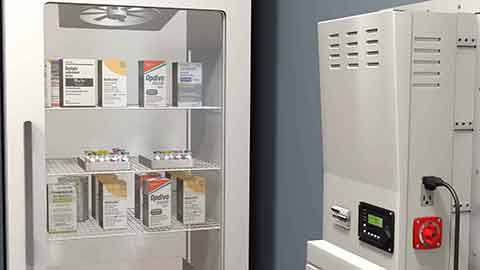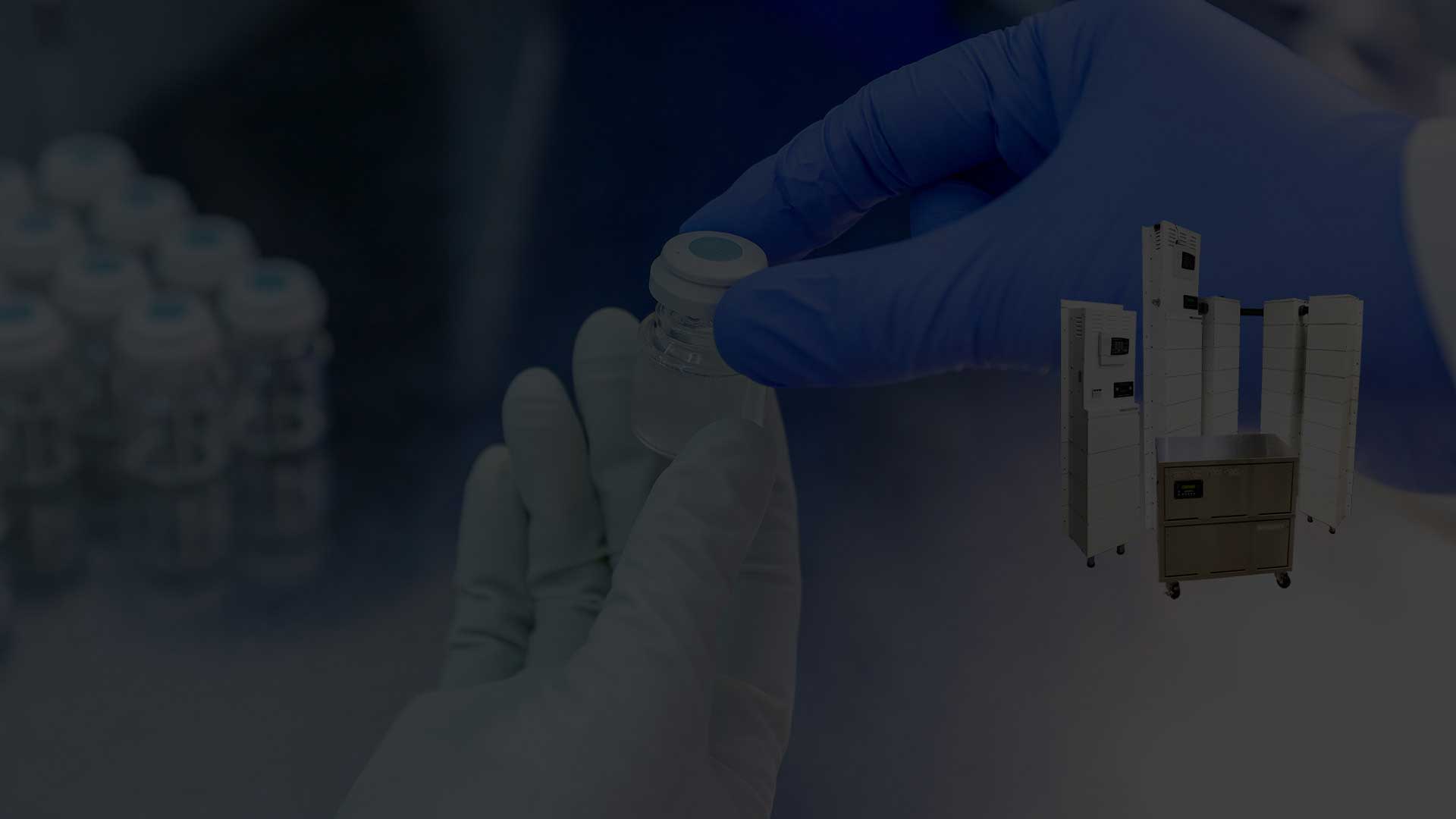The 5 Best Modern Diagnostic Tools and Medical Technologies
Whether its contemporary technology like CAT scans and MRIs, or the tried, true, and iconic tools traditionally associated with medicine like the stethoscope or sphygmomanometer, the diagnostic medical field has never had more powerful tools at its disposal than it does in the modern age.
Even with all the tools available to our medical professionals, continuous improvements are always being made in the available methods used to diagnose ailments—especially when it comes to incorporating machine learning, artificial intelligence, and remote monitoring technology.
Due in part to the COVID-19 pandemic, we’ve seen an accelerated rate in adoption of these technologies by hospitals, ASCs, and individual practices alike. The following list is compiled with prime examples of game-changing diagnostic tech either on the rise or on the horizon that you should keep an eye out for and consider integrating into your practice in the near future.
At-Home Rapid Antigen Tests
The concept of an easy-to-use and fairly accurate test that can quickly reveal if a patient is suffering from an ailment is not a new one. Many common diseases such as strep throat, the seasonal flu and malaria have utilized rapid antigen test as part of their diagnosis protocol for years. Additionally, at-home testing has also existed—most commonly in the form of commercially available pregnancy tests.
However, The COVID-19 pandemic accelerated and normalized the use of at-home testing kits to aid the public in diagnosing their ailments before seeking medical attention—Billions being produced and utilized worldwide in such a short period of time. Therein lies the reason why they belong on this list. Not all medical technology developments lie in what is being used as the scale at which there has proven to be a demand for at-home testing combined with an expected shift in consumer expectations is what will push the offerings available to the public in the coming years.
And on the side of the healthcare professionals their widespread use and the infrastructure put into place by both the public and private sectors, could potentially allow for more resources to be put towards more difficult to diagnose ailments, achieving an overall increase in outcomes and efficiency throughout the system—the goal of any new diagnostic tool.
Wearable Medical Technology
Lifestyle-focused wearable tech gadgets have been around for years. Fitbits, Apple Watches, and other smartwatches are no longer trendy toys that tech enthusiasts use to ostentatiously display their savviness. They’re now powerful computers we can wear with us all the time that serve endless numbers of functions—Apple shipped close to 40 million of theirs in 2021 alone.
By their nature, people take their wearables everywhere they go— making it a diagnostic tool that can exist well outside the confines of a medical office. Naturally, the kind of technology that can track minute-by-minute trends in a users body movement, heart rate and stress levels—among others— would be both extremely useful and desirable across every medical discipline and specialty—and medical technology manufacturers have taken notice.
Going beyond the consumer technology companies who integrate (impressive) health monitoring into their products, companies like Decxom are moving into the wearable healthcare monitoring space with products like their smart-device enabled G6 CGM wearable glucose monitoring system which allow diabetics to not only manage their conditions by themselves, but allow them to share the data collected with their healthcare provider—providing access to datasets that exist outside the 4 walls of an exam room.
Lab-on-Chip
First revealed in 2017 and supercharged by COVID-19, Stanford University School of Medicine has been using microfluid technology to develop a diagnostic tool that looks to revolutionize the world of diagnostic medicine.
Described as “a two-part system—A clear silicone microfluidic chamber for housing cells sits on top of a reusable electronic strip.” Stanford’s “lab on a chip” uses the electrical properties present in cells to separate an existing fluid into the components that comprise them.
Originally designed as a tool that could help identify patient-specific mutations of cancer cells— Ron Davis, PhD, professor of biochemistry and of genetics and director of the Stanford Genome Technology Center has said that “the low cost of the chips could democratize diagnostics similar to how low-cost sequencing created a revolution in health care and personalized medicine”
Because of the ability for this technology to allow clinicians and researchers to rapidly analyze massive amounts of individual cells for far cheaper than what previously existed, it was the perfect technology to use to accelerate COVID-19 research. What new and exciting applications are on the horizon for this fledgling tech are unknown, but its cost-effectiveness and speed certainly make it look as if we’ll soon be seeing it in labs and offices everywhere.
Remote Patient Monitoring Weight Scale
While closely related to telehealth, Remote Patient Monitoring is its own segment entirely. While telehealth is the use of telecommunications technology to support long-distance car—think a virtual doctor’s appointment—RPM is the use of a device prescribed by the provider, connected to the internet, that allows them to view and monitor the pre-defined status of whichever of the patients’ condition they see fit.
While some wearable technologies—like we mentioned before— are included in this segment it is not just limited to them. The previous example of the smart device-enabled glucose monitoring system would NOT be an RPM as the data does not go directly to the physician. Instead, the data is stored with the end user who has the option to share the information with their provider.
For an example of an RPM, a physician who concludes that a patient’s weight needs monitoring could prescribe them a scale which will send information directly to the provider to allow them to track it. Once analyzed, the provider can continue to give the patient the necessary health and wellness advice based on the stream of data received.
The embrace of this technology will hopefully lead to increased efficiency in the healthcare space, as doctors, nurses and the like can provide care to a larger number of patients at a time due to the decreased need to have them in the office to provide the advice and care they will need.
Artificial Intelligence
In a huge announcement, Verily (formerly known as Google Life Sciences) invested as part of a $18.5 million dollar round of funding for Zephyr AI, an artificial intelligence firm founded in 2020 who, according to their website, are looking to “Create groundbreaking algorithms” and “build the most comprehensive dataset in the world”.
What this means is, development of new pharmaceutical technology can be more focused, as larger datasets can take some of the inconsistency out of the traditionally siloed environments present in pharmaceutical trials. Additionally, using machine learning algorithms in conjunction with patient history could see the development of medical software that had the ability to diagnose and prescribe solutions on their own—though real-life physicians would obviously make the final decision.
Once again increasing efficiency and patient outcomes, AI and its related technologies look to aid boots-on-the-ground medical staff in dealing with the guesswork by leveraging an amount of data one person couldn’t possibly be asked to decipher— which ultimately will help boost their own career satisfaction leading to even better care and patient outcomes.
Bonus: Battery Backup Power Systems
Backup power is nothing new, we’ve been building our systems for over 20 years. Also, most governments and accreditation boards require having backup power for your facility to be licensed to practice—a safety measure we can all agree on.
So, what is so modern about battery backup power then?
Among other reasons, as you look to modernize your facility getting away from fossil-fuel powered generators and instead choosing battery power can be a way to begin a “green” campaign and decarbonize your practice—doing your part to both help combat climate change and improving the air quality in the area where you and your patients live.
Additionally, MediProducts Battery Backup Power Systems include modern hi-tech features like remote web monitoring of:
-Battery Life Remaining
-Charging Status
- Refrigerator/Freezer cabinet temperature
And more!
As for reliability, all our Power Alert Systems also come with the ability to send an instantaneous emergency phone call to four different numbers, continuing to dial each one sequentially until the call is acknowledged. These features make MediProducts the perfect solution for your facility’s emergency backup power needs.
Similarly, just like the other technologies listed it quickly becomes a powerful tool in increasing overall efficiency and patient outcomes in an emergency—especially due to their automatic and instantaneous deployment.


